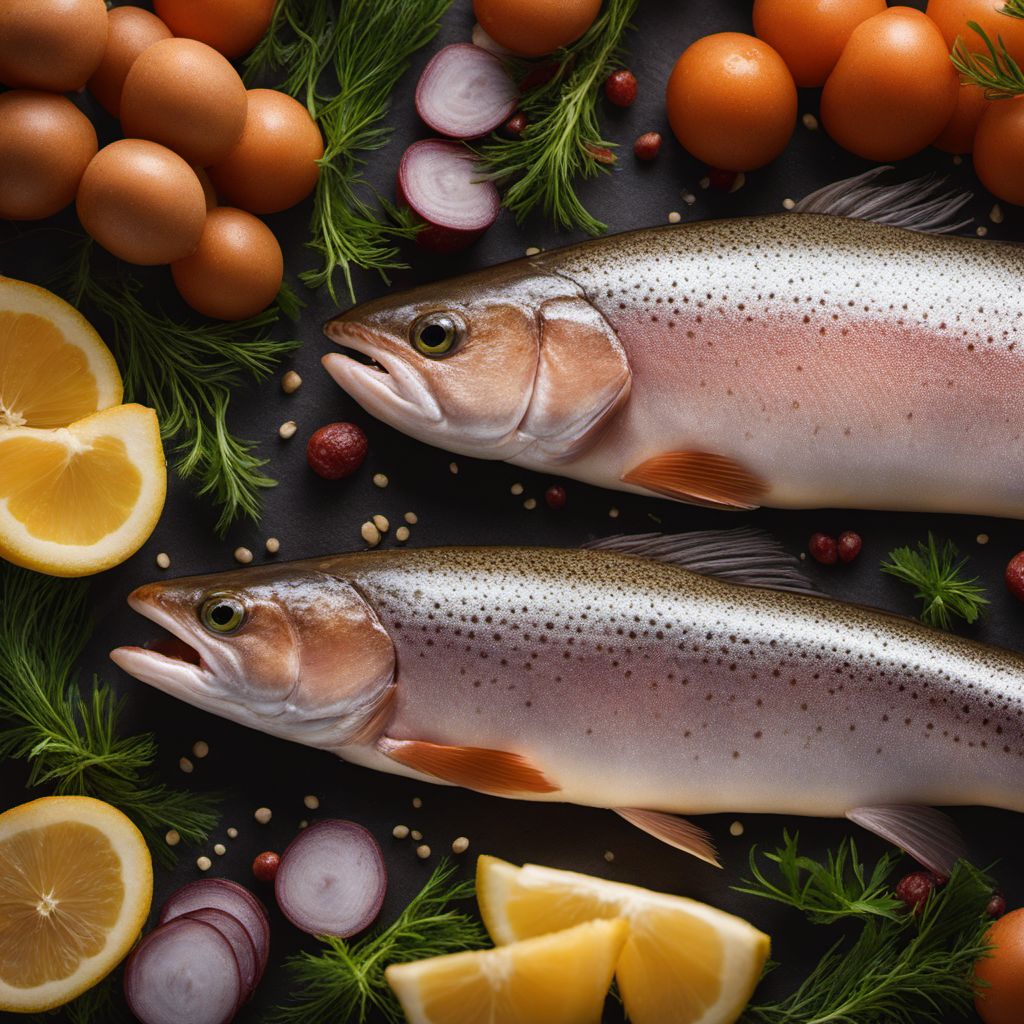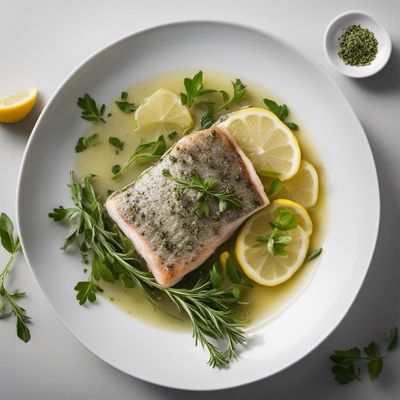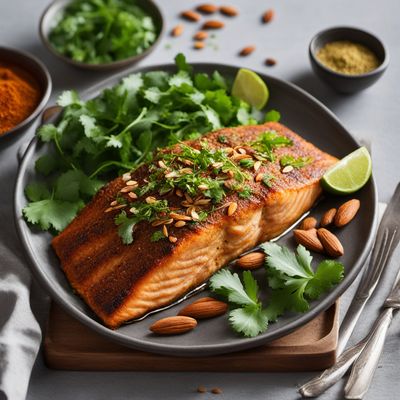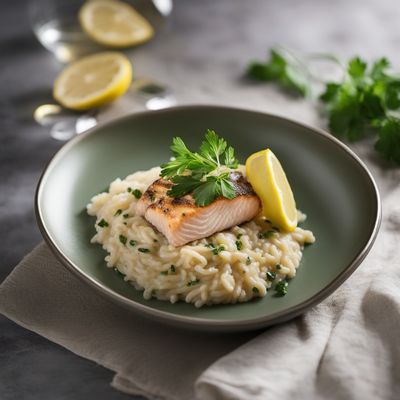
Ingredient
Cutthroat trout
The Fiery Beauty of Cutthroat Trout
Cutthroat trout is a freshwater fish with a distinctive red or orange slash mark on the lower jaw, hence its name. It has a tender, flaky flesh that ranges in color from pink to orange and offers a mild, slightly nutty flavor. Its texture is firm yet delicate, making it versatile for various cooking methods such as grilling, baking, or pan-searing.
Origins and history
Cutthroat trout is native to the western United States and has a rich history among Native American tribes who relied on it as a valuable food source. It was named after the red slash mark on its throat, which resembles a cut. Today, it is highly sought after by anglers and is also commercially farmed to meet the demand for its delectable flesh.
Nutritional information
Cutthroat trout is a lean source of protein and is rich in omega-3 fatty acids, which are beneficial for heart health. It also provides essential vitamins and minerals such as vitamin D, vitamin B12, selenium, and phosphorus.
Allergens
May contain fish allergens.
How to select
When selecting cutthroat trout, look for fish with bright, clear eyes, shiny skin, and a fresh, mild aroma. The flesh should be firm to the touch and have a vibrant color. Avoid fish with dull or discolored skin, cloudy eyes, or a strong fishy odor.
Storage recommendations
To maintain its freshness, store cutthroat trout in the coldest part of the refrigerator, preferably wrapped in moisture-proof paper or plastic wrap. Consume it within 1-2 days of purchase for optimal flavor and quality. If freezing, ensure it is tightly sealed to prevent freezer burn.
How to produce
Cutthroat trout can be produced through aquaculture or by catching them in their natural habitat. For amateur fishermen, it is important to follow local fishing regulations and practice sustainable fishing methods to preserve the population of this species.
Preparation tips
Cutthroat trout can be prepared in various ways, such as grilling, baking, broiling, or pan-searing. For a simple and flavorful preparation, season the fish with salt, pepper, and a squeeze of lemon juice before cooking. Serve it with fresh herbs or a light sauce to complement its delicate flavor.
Substitutions
Rainbow trout, brook trout, or Arctic char can be used as substitutes for cutthroat trout, as they share similar flavor profiles and textures. However, each may have slight differences in taste and appearance.
Culinary uses
Cutthroat trout is commonly used in dishes such as trout almondine, trout en papillote, or simply grilled with lemon and herbs. It pairs well with flavors like dill, garlic, citrus, and butter. Its versatility allows it to be incorporated into salads, pasta dishes, or served as a main course.
Availability
Cutthroat trout is commonly available in the western United States, particularly in states like Montana, Wyoming, Idaho, and Colorado. It can also be found in some parts of Canada.
More ingredients from this category
Recipes using Cutthroat trout

Assyrian-style Grilled Trout
Flavors of Assyria: Grilled Trout with Middle Eastern Spices

Trota in Bianco with Lemon and Herbs
Zesty Herb-Infused Italian Trout

South Asian Spiced Trout with Almonds
Tantalizing Spiced Trout Delight

Grilled Trout with Wisconsin-inspired Flavors
Wisconsin Trout Delight: Grilled Trout with Local Herbs and Cheese

Grilled Mexican Trout with Citrus Salsa
Zesty Grilled Trout: A Burst of Mexican Flavors

Goan-style Cornmeal Crusted Trout
Spicy and Crispy Goan Trout Delight

Truchas a la Navarra
Savory Stuffed Trout - A Spanish Delight

Crispy Cornmeal-Crusted Trout
Golden Delight: Crispy Cornmeal-Crusted Trout with a Croatian Twist

Trout alla Toscana
Tuscan-inspired Trout Delight

Creamy Lemon Risotto with Trout
Zesty Delight: Creamy Lemon Risotto with Trout